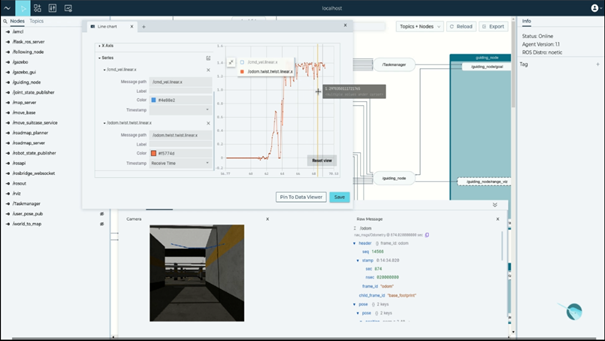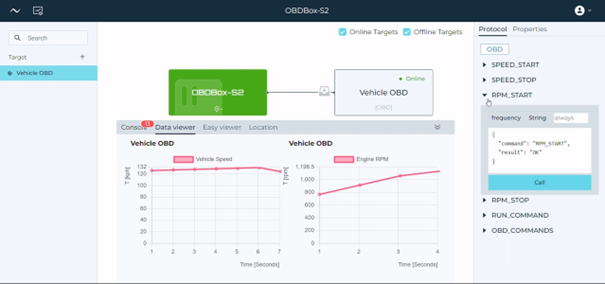XDP – Automotive and Robotic Cross-Domain Development Platform
Welcome to the Future of Automotive Software Development with XDP!
The Cross-Domain Automotive and Robotics Developer Platform, or XDP for short, aims to redefine the landscape of automotive software development.
Introducing XDP: Your Comprehensive Solution for Automotive Software Development
XDP is not merely a platform; it’s an ecosystem designed to elevate your software development endeavors in the automotive and robotics sectors. By seamlessly integrating multiple tools and streamlining complex processes, XDP empowers you to architect, integrate, and deploy with unparalleled efficiency.
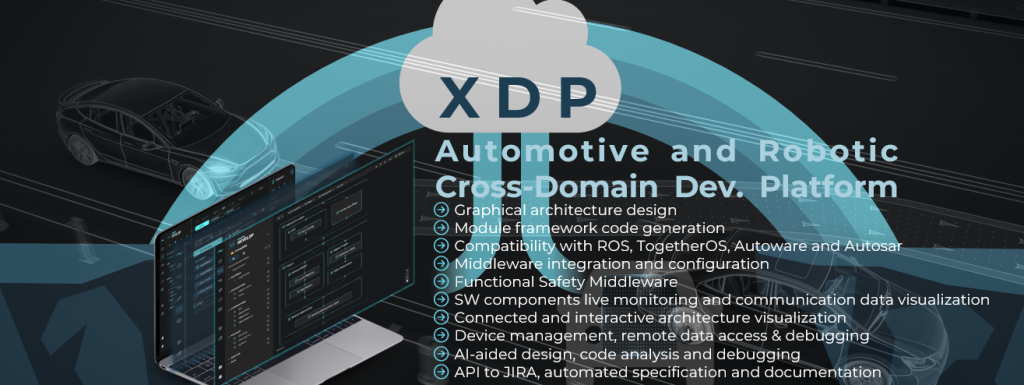
XDP integrates the NISAR Tools into one holistic platform:
- ADS – Architect Design Studio: Lay the groundwork for success using our Architect Design Studio. Visualize, plan, and blueprint your software architectures through an intuitive drag-and-drop interface.
- ROS Browser: Navigate the Robot Operating System (ROS) effortlessly with our integrated ROS Browser. Browse your system architectures, see live topic data at a glance and define visualization widgets – all in one tool.
- DRS²: The modular Data Re-simulation System: due to using a component-based middleware in XDP we can replay data and inspect the software as whole or individual modules
- MSWS²: The Modular SW Simulation System enables simulating your SW in a vehicle simulator, the data is piped into the component-based middleware. Thus, you can inspect the software as whole or individual modules
- IoT Connector: Seamlessly bridge the digital and physical worlds with the IoT Connector. Facilitate seamless interaction between your software, your data and your physical entities. Be it flashing or configuring ECUs or vehicles over the air, remote debugging or data streaming.
- Cloud Data Platform: Leverage the power of data with our Cloud Data Platform. Capture, store, and analyze crucial data points to inform your development process and engineering teams and by this enhance project outcomes.
Bridging different AI Ecosystems
XDP integrates several different AI Ecosystems, such as, but not limited to Nvidia and Horizon Robotics TogetherOS. By this we strive to make the systems comparable to enable our customers to make educated decisions. Furthermore, we want to enable our customers to cross-deploy one AI algorithm on different AI Ecosystems with as low porting effort as possible.
> The XDP Advantage: Empowering Innovation and Efficiency <
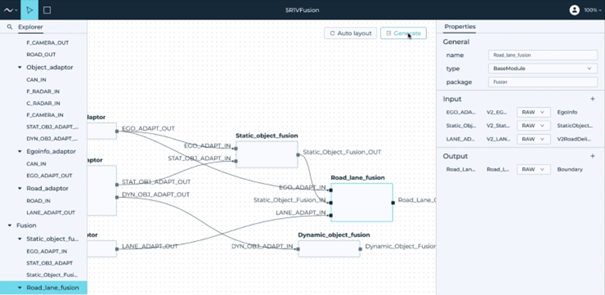

Exploring the Key Features of XDP
- Graphical architecture design
- Code generation for different frameworks
- Compatibility with ROS, TogetherOS (Horizon Robotics AI Middleare and Ecosystem), Autoware© and Autosar
- Middleware integration and configuration – even connecting different middleware in on system
- Functional Safety Middleware
- SW components live monitoring in simulation or re-simulation, live visualization of communication data
- Interactive architecture visualization which is connected to the live system
- Device management, remote data access to the target ECUs or devices for over-the-air flashing and configuration
- Remote debugging over-the-air with various protocols like XCP and also by using physical debuggers remotely
- AI-aided design, code analysis and debugging by applying design wizards
- API to JIRA, automated specification and documentation to ease the integration with the project management
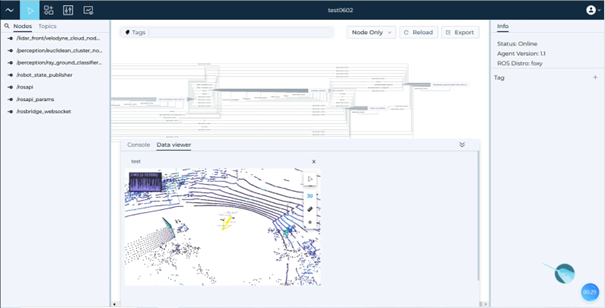
At Nisar, our mission is to empower developers with tools that enhance productivity and enable innovation. XDP stands as a testament to this commitment. Whether you’re a seasoned developer or a newcomer to the field, XDP’s intuitive interface and robust functionalities cater to a spectrum of expertise levels.
